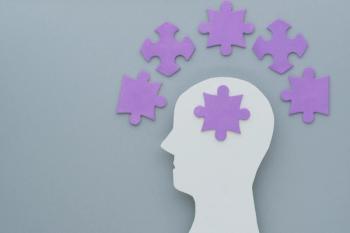
The Meaning of Addiction: DSM-5 Gives the Lie to Addiction as a Chronic Brain Disease
Although Charles O’Brien, MD, who heads the substance-related disorders work group, is a vigorous proponent of the notion of addiction as a disease, nothing about the proposed DSM-5 substance-related disorders section supports the idea that the syndrome is best understood as a chronic brain disease.
Although Charles O’Brien, MD, who heads the substance-related disorders work group, is a vigorous proponent of the notion of addiction as a disease, nothing about the proposed DSM-5 substance-related disorders section supports the idea that the syndrome is best understood as a chronic brain disease.
The return to the terminology of “addiction” and “addictive disorders” (replacing dependence) to subsume substance problems immediately calls into question the classic biochemical model of addiction, which at one time was applied solely to heroin and other narcotics, and then expanded to incorporate cocaine and marijuana, drugs with entirely different chemical and pharmacological profiles. DSM-5 expands the list of drugs now labeled capable of causing addiction well beyond this.
Indeed, it is not clear which drugs cannot result in addiction in susceptible individuals under the right conditions. This, of course, undercuts the whole notion that substances with specific molecular characteristics link with receptor sites hypothesized to unlock the brain’s addictive response. Of course, identifying compulsive gambling as addictive makes the idea that there is an exclusive chemical pathway corresponding with an addictive brain reward system unlikely to the point of fantastical.
But, ultimately, what conclusively refutes the cherished idea that addiction can be traced to a characteristic brain pattern (one measurable by a PET scan) is the gradated severity scale on which addictive disorders are to be scored by DSM-5. As the AA saying does, “You can’t be partially alcoholic (according to AA’s disease notion of alcoholism), any more than you can be partly pregnant.” But DSM-5 says that you can be -– as DSM-IV likewise did with its abuse and partial remission categories. This of course corresponds with epidemiologic data (cf. NESARC) that show people waxing and waning on dependence measures over their lifetimes (more often waning), often within a relatively short time frame.
I have been proposing an experiential model of addiction from the time I wrote Love and Addiction (1975) and The Meaning Addiction (1985). I conceive addiction as a more or less pathological adherence to an involvement - – defined by its experiential benefits for an individual in a specific life circumstance (eg, the Vietnam War theater, adolescence) –- as measured by its negative consequences (more or less as laid out in DSM-IV and repeated in DSM-5). And each subsequent rendition of DSM seems more closely to approximate my model.
[Editor's note: For more on addiction, see
References:
References
Peele S, Brodsky A. Love and Addiction. New York: Taplinger; 1975.
Peele S. The Meaning of Addiction. Lexington, MA: Lexington Books; 1985.
Newsletter
Receive trusted psychiatric news, expert analysis, and clinical insights — subscribe today to support your practice and your patients.














